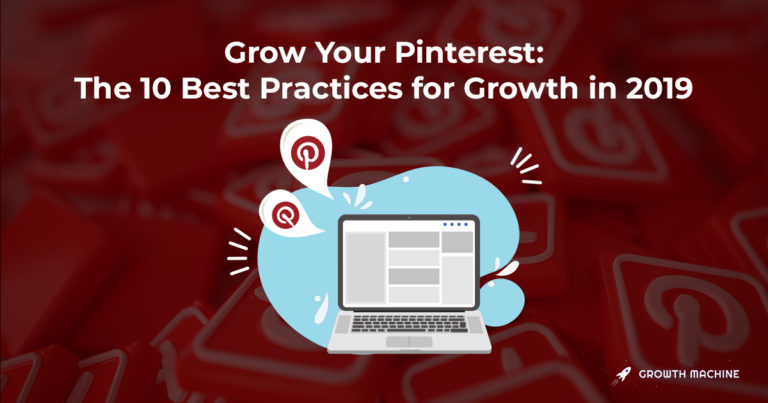What Is Keyword Mapping? 4 Tips To Boost Your Keyword Efforts
Keywords are the foundation of search engine optimization (SEO). These are the queries users type into search engines like Google to find your site, so in many cases, your website’s keywords will have a big impact on your search rankings.
The kicker is that it isn’t enough to load your website chock-full of keywords. You need to strategically place these keywords on your website, and that’s where keyword mapping comes into play.
In this guide, we’ll demystify keyword mapping, explain why it matters, and provide a step-by-step guide to help you map keywords.
What Is Keyword Mapping?
Keyword mapping is the process of matching or “mapping” keywords to pages on your website. It’s a must-have content marketing strategy that optimizes pages for the right keywords and boosts your visibility on search engine results pages (SERPs).
Instead of placing keywords on your site willy-nilly, you follow a keyword mapping strategy to clarify which pages are targeting which keywords, which reduces overlap and eliminates keyword cannibalization.
Keyword mapping typically follows three steps:
- Keyword research: First, you need to know which search terms to target. Use keyword research tools like Google Keyword Planner, Ahrefs, or Semrush to kick off your search. Look for a mix of long-tail keywords with high volume and low competition—that’s the SEO holy grail. If you aren’t sure how to do keyword research, go with an experienced SEO agency like Growth Machine to do all of the heavy lifting for you.
- Mapping: Once you have a solid list of keywords, allocate them to specific pages on your website. Ideally, these keywords should match the content and purpose of each page. For example, a page titled “Beginner’s Guide to Digital Marketing” would map to more basic keywords about digital marketing.
- Optimization: Now that you’ve assigned a keyword to each page, you overhaul the copy to include that keyword. This includes placing the keyword in the body copy and your page title, image alt text, meta description, and headers.
What Is URL Mapping in SEO?
With URL mapping, you create a structured, SEO-friendly URL for each page based on its primary target keyword. For example, a page about organic coffee beans would have a URL like “example.com/organic-coffee-beans.”
While it’s important to focus on keyword mapping first, URL mapping can also help:
- Improve the user experience
- Speed up how quickly search engines index your site
- Prevent duplicate content
- Improve click-through rates
Keyword mapping ensures each page targets the right keyword, while URL mapping ensures each page has a descriptive web address. Combined, the two give you a solid foundation for an effective marketing strategy.
Why Keyword Mapping Is Important
Sure, it might sound like an extra step, but keyword mapping is the pillar of SEO. Failing to map keywords dilutes your SEO strategy and makes your content less relevant—both to human readers and search engine bots.
Nobody wants that, so take the time to map keywords. When you put in the effort, you’ll see a range of benefits, including:
- Improved search engine rankings: Optimizing each page for a unique set of keywords increases the likelihood of ranking higher in the SERPs. Keyword mapping gives search engines a better understanding of your page content, which improves your chances of showing up for relevant searches. The higher you are in the SERPs, the more likely users are to visit your website and learn about your brand.
- Better user experience: Search engines care about the user experience. Mapping keywords caters to user intent, which means you give users exactly what they’re searching for. This reduces bounce rates and encourages people to interact with your site longer—and that’s great for both your rankings and conversion rates.
- Less keyword cannibalization: Cannibalization happens when two or more pages on your site compete against each other for the same keyword. This internal competition confuses search engines and makes it harder for your pages to rank effectively. Fortunately, keyword mapping ensures each keyword has a designated place on your site, minimizing overlap and the chances of cannibalization.
How to Do Keyword Mapping of a Website
Keyword mapping sounds relatively simple in theory, but what does the keyword mapping process actually look like?
Don’t worry—we’ve got you covered. Follow these best practices to map quality keywords to every page on your website.
Start With Comprehensive Keyword Research
For starters, you need a big pool of potential keywords. But that doesn’t mean you should pull them out of thin air.
Use keyword mapping tools like Google Analytics, Google Search Console, Ahrefs, and Semrush to generate relevant keyword ideas. If you’re new to SEO, focus more on long-tail SEO keywords. They might have lower traffic, but there’s less competition for these keywords, so you’ll likely see SEO wins more quickly.
Not sure which keywords are good contenders? Look at data points like:
- Search volume: This is the average number of keyword searches in a given month.
- Keyword difficulty: This metric determines how hard it is to rank for a keyword based on factors like competition and average click-through rates.
- Relevance: Maybe you found a high-volume, low-competition keyword. But is it actually relevant to your website or business? Don’t toss irrelevant keywords in to generate traffic—we guarantee it won’t work. You need relevant traffic, so choose specific keywords that relate to your site copy.
There’s no such thing as the perfect keyword, so go for a mix. For example, you might find a relevant long-tail keyword with low difficulty, but it might not get as much traffic as a more competitive short-tail keyword.
Keyword research can get overwhelming, and fast, so log all potential keywords in an Excel spreadsheet or template. This will make it much easier to narrow down your keywords.
If this sounds like too much technical mumbo-jumbo, trust Growth Machine’s team of SEO experts to do the hard work for you. We do all of the keyword research for you to put together a pro-level keyword list designed for results. To get an idea of how we work, see how we helped a FinTech brand increase organic traffic by over 6,000% in 13 months.
Understand Search Intent
At this point, you have a big list of keywords that you need to narrow down. Go through the list and categorize the keywords by user intent. Classify each keyword into one of these four categories:
- Informational: These are folks who just want information. This includes keywords like “What’s the capital of France?” or “How to make homemade pizza.”
- Navigational: Users with navigational intent already have a specific page in mind. This includes keywords like “Facebook login” or “Amazon customer service.”
- Transactional: These queries show buying intent and include keywords like “Download Adobe Photoshop trial” or “Buy iPhone online.”
- Commercial: This isn’t quite the same as transactional intent. People with commercial intent are in the process of researching solutions but haven’t made a decision yet. They’re evaluating options and comparing products or solutions. They type in search queries like “Best running shoes 2023” or “WordPress vs Wix for blogging.”
Cluster Keywords
Next, create a separate spreadsheet with all of your site URLs. After listing each URL, assign it as informational, transactional, navigational, or commercial.
Now you can start mapping keyword groups to each page. It’s helpful to group similar keywords to categorize them under one primary topic. Be sure to only pull similar keywords from the correct search intent category. For example, avoid using informational keywords on transactional pages, like trying to fit “what is wood stain” on a wood stain product page.
By the way, make sure you don’t reuse keywords across multiple pages. Every page should have a unique set of target keywords.
Optimize Copy
The last step of the keyword mapping process is page optimization. At this stage, you know the search intent for each page and have a list of keywords mapped to every web page. Now you need to strategically add these keywords to your copy to attract both search engine bots and users to your site.
Optimize your copy by:
- Adding internal links
- Plugging semantic keywords into the copy
- Adding keywords to your title tag, meta description, image alt tags, and headers
- Creating a link building strategy to earn backlinks
Boost Organic Traffic With a Professional Keyword Strategy
Keyword mapping isn’t just something you do once; it’s an integral part of any holistic SEO strategy. Done right, keyword mapping bridges the gap between the searcher experience and website content creation.
The challenge is that keyword optimization and SEO are never really “done.” You need to create new content, optimize landing pages, and conduct regular SEO audits to stay one step ahead of the competition.
That’s a lot to handle on your own, which is why so many businesses optimize their search engine rankings with Growth Machine. A tech brand increased its weekly traffic by 600% and a sleep hygiene brand added 120,000 monthly organic sessions with Growth Machine’s all-in-one SEO strategy and implementation.
Isn’t it time for your website to grow? Chat with Growth Machine now to skyrocket your search engine rankings and organic traffic.






![How to Build a Digital Content Strategy: Step-by-Step Guide [2023]](https://new.growthmachine.com/wp-content/uploads/2024/06/How-to-Build-a-Digital-Content-Strategy-Step-by-Step-Guide-2023-768x403.png)
